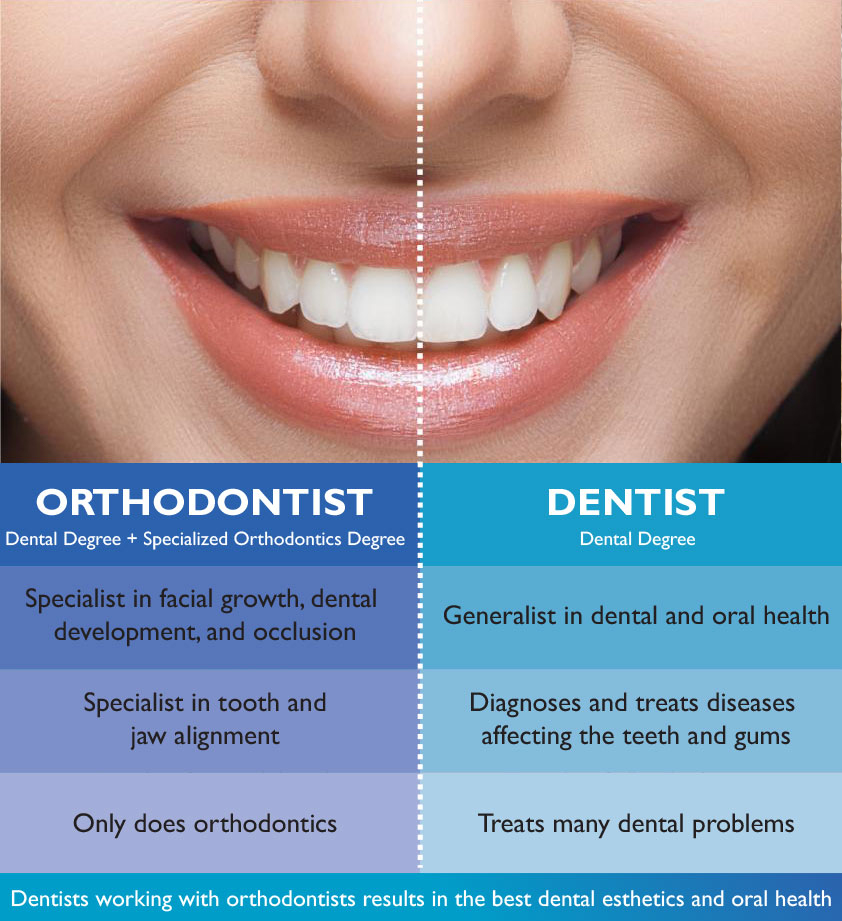The 30-Second Trick For Causey Orthodontics
Table of ContentsThe Ultimate Guide To Causey OrthodonticsA Biased View of Causey OrthodonticsThe 9-Minute Rule for Causey OrthodonticsNot known Facts About Causey OrthodonticsA Biased View of Causey OrthodonticsThe Best Strategy To Use For Causey OrthodonticsThe 30-Second Trick For Causey Orthodontics
What is the distinction between a dentist and an orthodontist? All dental experts, including orthodontists, deal with the teeth, periodontals, jaw and nerves.
Orthodontists and dental practitioners both supply dental look after clients. Orthodontists can operate in an oral office and use the same therapies as other dental professionals. So you can think of both physicians who treat periodontal and teeth troubles. The main difference is that ending up being an orthodontist requires a specific specialized in dealing with the imbalance of the teeth and jaw.
An Unbiased View of Causey Orthodontics
An orthodontist is a dental practitioner that has actually undergone training to specialize in the diagnosis, prevention and treatment of abnormalities in the jaw and teeth. Their training consists of dealing with these existing problems. They can also identify potential troubles in teeth placement that might develop when conditions are left untreated. Orthodontists can aid individuals of every ages.
This includes all the necessary education and learning to come to be a general dentist. According to the American Student Dental Organization (ASDA), it suggests you will need to have either a Physician of Medication in Dental Care (DMD) or a Physician of Oral Surgery (DDS). In other words, orthodontists require to finish dental institution and after that acquire an orthodontics specialized education.
Some orthodontists additionally get their masters in craniofacial biology. These programs focus on 2 details areas or techniques: Dentofacial Orthopedics: This study focuses on directing teeth and jaw growth.
Get This Report on Causey Orthodontics

 The total objective of an orthodontist is to improve an individual's bite. Not everyone is born with straight teeth, and an orthodontist will certainly ensure that people get uniformly spaced straight teeth.
The total objective of an orthodontist is to improve an individual's bite. Not everyone is born with straight teeth, and an orthodontist will certainly ensure that people get uniformly spaced straight teeth.
Some Known Questions About Causey Orthodontics.
The American Association of Orthodontists recommends your first check up by age 7. You'll need to see your orthodontist if you have a misalignment in your teeth, additionally called malocclusion. Likewise, if you see irregular bite patterns, a slightly misshapen jaw, or when your teeth are chock-full, you will likely need orthodontic therapy.
In addition, we offer adjustable treatment schedules, flexible settlement choices and an enjoyable, delightful experience.
An orthodontist is a dentist educated to identify, protect against, and treat teeth and jaw abnormalities. They remedy existing conditions and are educated to identify issues that may create in the future. Orthodontists deal with people of every ages, from youngsters to grownups. Individuals commonly connect a best smile with healthiness.
The 7-Minute Rule for Causey Orthodontics
Malocclusion, or misaligned teeth, can lead to oral issues, consisting of dental cavity, gum disease, and difficult or agonizing chewing. Not everyone is birthed with straight teeth. If you have a bad bite or huge spaces in between your teeth, you might wish to get in touch with a dentist focusing on orthodontic care.
(Image Credit Scores: DigitalVision/Getty Images) Orthodontists utilize fixed and detachable dental tools, like dental braces, retainers, and bands, to alter the setting of teeth in your mouth. Orthodontic treatment is for dental problems, including: Uneven teethBite troubles, like an overbite or an underbiteCrowded teeth or teeth that are too much apartJaw misalignmentThe goal of orthodontic treatment is to improve your bite.
The 7-Minute Rule for Causey Orthodontics

, however not all dental practitioners are orthodontists. They concentrate on 2 locations: How to appropriately and securely relocate teeth Just how to effectively assist advancement in the teeth, jaw, and faceOnce an orthodontist has completed training, they have the choice to end up being board certified.
Malocclusion leads to tooth overcrowding, a twisted jaw, or uneven bite patterns. Malocclusion is normally treated with: Your orthodontist affixes metal, ceramic, or plastic square bonds to your teeth.
Not known Facts About Causey Orthodontics
If you have only minor malocclusion, you might be able to use clear dental braces, called aligners, rather than typical braces. Some people need a headwear to help move teeth into line with stress from outside the mouth. After braces or aligners, you'll need to wear a retainer. A retainer is a customized gadget that keeps your teeth in location.